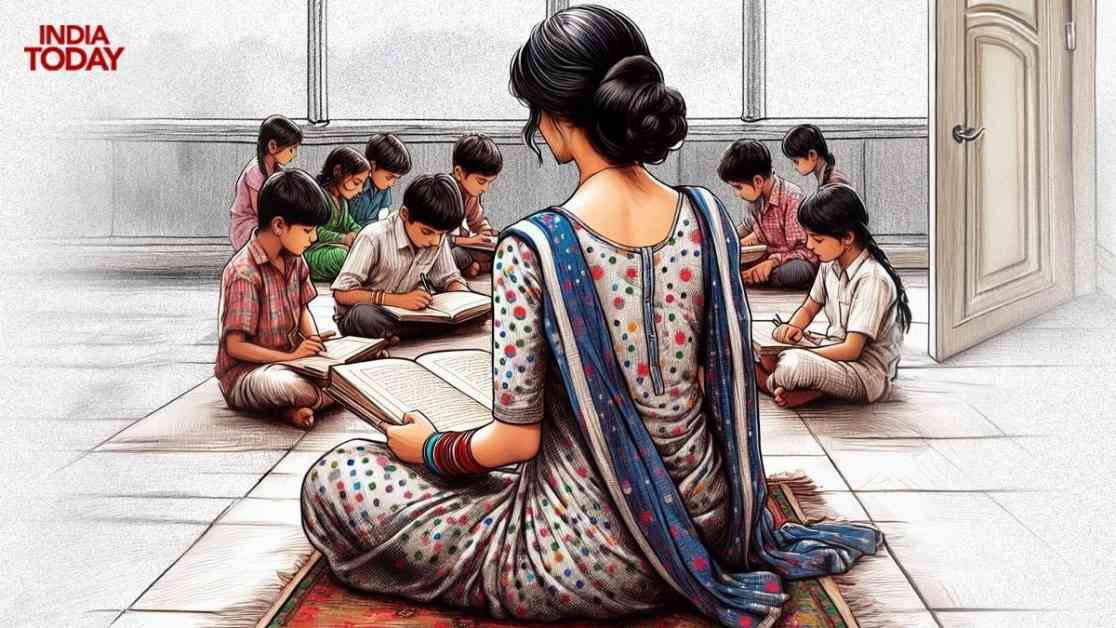In the latest Time Use Survey released by the Ministry of Statistics and Programme Implementation, a telling narrative unfolds regarding the division of household labor and caregiving responsibilities in Indian families. Despite slight progress in recent years, women continue to shoulder the bulk of unpaid domestic work and caregiving duties. The survey, conducted in 2024, sheds light on the stark contrast in time allocation between genders, painting a vivid picture of societal norms and gender roles in contemporary India.
The Time Use Survey: A Window Into Daily Life
The Time Use Survey serves as a crucial tool for understanding how individuals allocate their time across various activities, providing valuable insights into societal trends and gender dynamics. In a global context, countries like Australia, Japan, the Republic of Korea, New Zealand, the US, and China also conduct similar national surveys to gauge time usage patterns. By examining the participation of men and women in paid and unpaid activities, these surveys offer a comprehensive view of the daily routines and responsibilities that shape our lives.
Women’s Unpaid Domestic Work: A Labor of Love
One of the most striking findings of the 2024 Time Use Survey is the disproportionate burden of unpaid domestic work borne by women. Female participants between the ages of 15-59 devoted an average of 305 minutes daily to unpaid domestic services, a figure slightly lower than the 315 minutes recorded in 2019. In contrast, men spent just 88 minutes on similar tasks, highlighting a significant disparity in household labor division. These numbers underscore the enduring reality that women are often the primary caregivers and homemakers within Indian households, a role deeply ingrained in the social fabric.
Caregiving Duties: A Gendered Responsibility
In addition to household chores, the Time Use Survey also illuminates the gender gap in caregiving responsibilities. Female participants dedicated approximately 140 minutes per day to caregiving activities, nearly double the 74 minutes allocated by their male counterparts. This stark contrast underscores the prevailing norm that places the onus of caregiving on women, reflecting broader cultural expectations and societal norms. As the official statement aptly points out, caregiving responsibilities within Indian households predominantly fall on the shoulders of women, highlighting the unequal distribution of labor within familial structures.
Balancing Act: Employment and Related Activities
While women continue to bear the brunt of household and caregiving work, there has been a gradual shift in employment-related activities. In 2024, 25% of women aged 15-59 participated in employment and related activities, marking a modest increase from previous years. However, men still dominated this sphere, with 75% of male participants engaging in employment activities. The survey also revealed a significant gap in the time spent on employment and related tasks, with men devoting 473 minutes daily compared to women’s 341 minutes. This divergence underscores the persistent gender disparities in the workforce and highlights the challenges women face in balancing professional and domestic responsibilities.
Education and Leisure: A Shared Pursuit
Beyond household chores and employment, the Time Use Survey also sheds light on educational and leisure activities among participants. Children aged 6-14 displayed high rates of participation in learning activities, spending an average of 413 minutes per day on educational pursuits. Interestingly, both male and female participants above the age of 6 dedicated equal time to learning activities, signaling a positive trend towards educational equity. Moreover, the survey noted an increase in the time allocated to culture, leisure, mass media, and sports practices, highlighting the growing importance of recreational activities in daily life.
The 2024 Time Use Survey: A Glimpse into Daily Realities
In conclusion, the 2024 Time Use Survey provides a comprehensive snapshot of how individuals across different age groups allocate their time in various activities. From the unequal distribution of household labor and caregiving duties to the evolving landscape of employment and education, the survey offers valuable insights into the intricate tapestry of daily life in India. As we reflect on these findings, it becomes evident that addressing gender disparities and promoting equitable participation in all spheres of life are essential steps towards creating a more inclusive and balanced society.
The 2024 Time Use Survey conducted by the Ministry of Statistics and Programme Implementation offers a nuanced understanding of how individuals in India spend their time, revealing enduring gender disparities in household and caregiving responsibilities, alongside shifting trends in employment and education. Through a detailed analysis of daily activities and time allocation, the survey underscores the need for greater gender equality and social change to create a more balanced and inclusive society.























